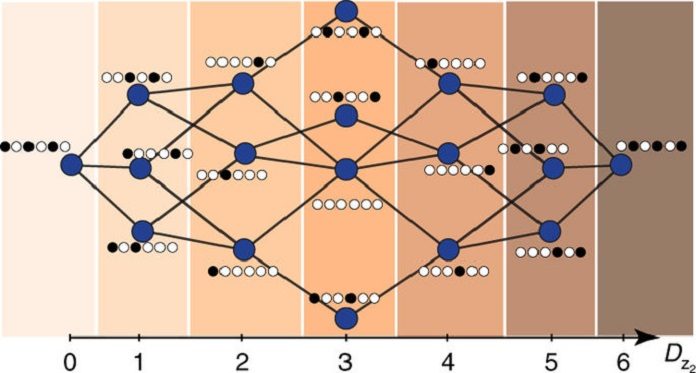Harvard scientists and MIT scientists recently trapped a quantum simulator, a record 53 atoms and individually controlled their quantum state. This demonstration suggests whole new periodic oscillations in the dynamics of the interacting atoms.
Now, an international team of researchers, including Alexios Michailidis and Maksym Serbyn from the Institute of Science and Technology Austria (IST Austria), as well as researchers from the University of Leeds and the University of Geneva, have solved the mystery of these previously inexplicable oscillations. Their discovery introduces a new concept of a “quantum many-body scar”.
Scientists believe that their discovery could alter the understanding of the possible dynamics in many-body quantum systems.
Michailidis explained, “Imagine a ball bouncing around in an oval stadium. It will bounce around chaotically, back and forth through the available space. As its motion is random, it will sooner or later visit every place in the stadium. Amidst all the chaos, however, there might be a potential for order: if the ball happens to hit the wall at a special spot and at the “correct” angle of incidence, it might end up in a periodic orbit, visiting the same places in the stadium over and over and not visiting the others. Such a periodic orbit is extremely unstable as the slightest perturbation will divert the ball off its track and back into chaotic pondering around the stadium.”
“The same idea applies to quantum systems, except that instead of a ball bouncing around, we are looking at a wave, and instead of a trajectory, we are observing a probability function. Classical periodic orbits can cause a quantum wave to be concentrated in its vicinity, causing a “scar”-like feature in a probability that would otherwise be uniform.”
“Such imprints of classical orbits on the probability function have been named “quantum scars”. The phenomenon, however, was only expected to happen with a single quantum particle, as the system’s complexity rises dramatically with every additional particle, making periodic orbits more and more unlikely.”
Scientists observed the occurrence of quantum many-body scars. They also identified many-particle unstable periodic orbit behind the scarring behavior as the coherent oscillation of atoms between the excited and ground states.
Instinctively, the quantum many-body scar might be imagined as a piece of arrangement space that is somewhat “shielded” from chaos, consequently prompting a much slower unwinding. As such, the framework takes more time to come back to tumult—the equilibrium state.
Serbyn said, “We still don’t know how common quantum many-body scars are, but we have found one example, and this is a paradigm shift. But there is a lot left to find out. We don’t yet understand all the properties of many-body quantum scars, but we have successfully explained the data. We hope that a better understanding of quantum scars will provide a way of protecting quantum systems from relaxation.”
The study is published in Nature Physics.
